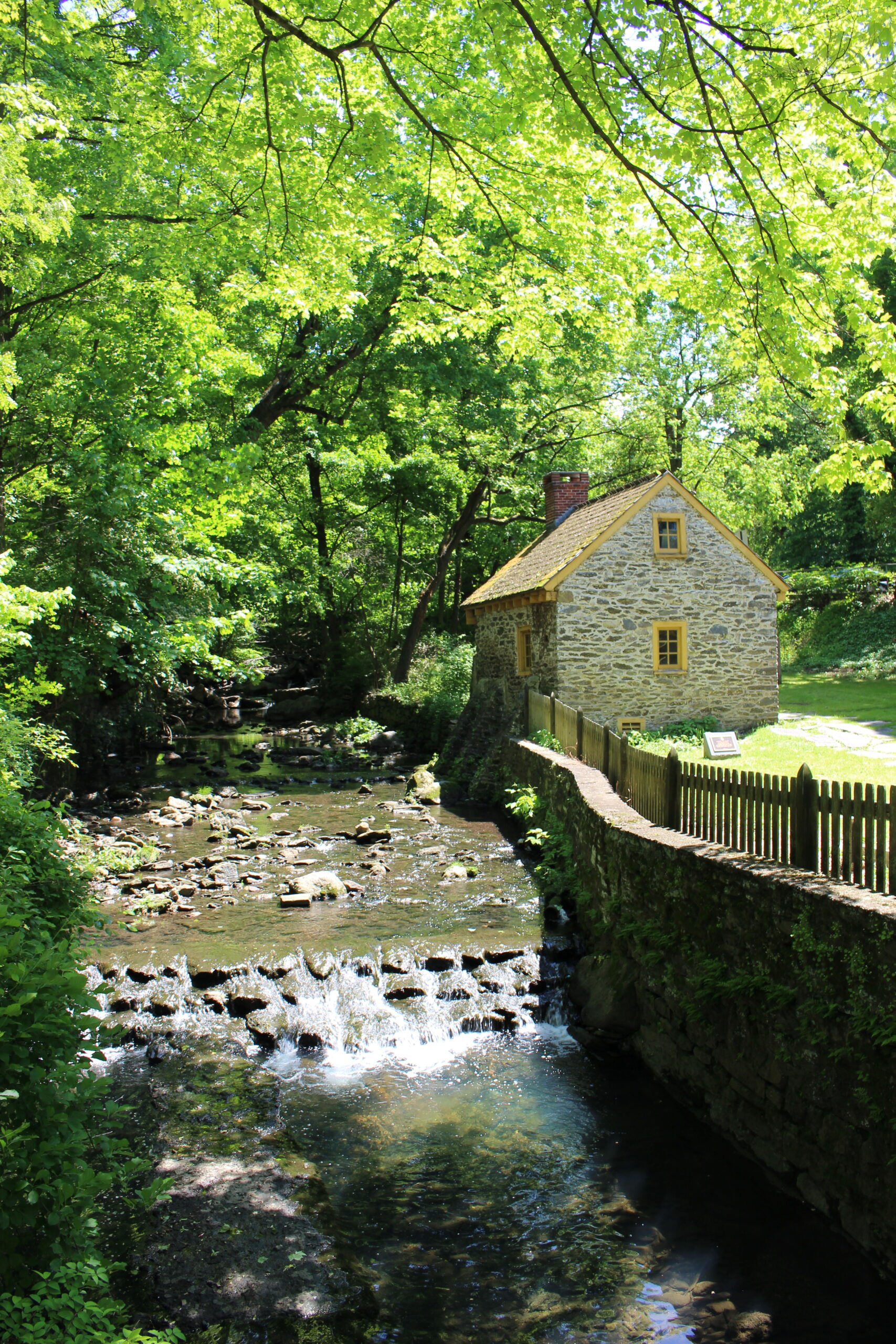I’ve been told that you know a story is getting good when it suddenly takes off in a new and unanticipated direction. That’s how I felt tracking Katherine Gerbner’s scholarship as she made the compelling argument that two early American anti-slavery documents originated from the same resolute group of settlers in Germantown. As I followed the trail in 1690s Philadelphia, I found that there was a lot going on between the writing of the Germantown Protest of 1688, the first written American document against slavery, and the publication of the Exhortation of 1693, the first printed anti-slavery document. In fact, this period was racked with infighting and instability.
So many historians rolled out the term the “Keithian Controversy” to cover this contentious time. They would just drop it into a paragraph and then move on, as though the reader was supposed to know all about it. I wanted to learn more about this controversy, especially because it was happening right around the time that these anti-slavery documents were being produced. The Keithian Controversy is quite an onion of a story, with layers that speak to the importance of religious doctrine to early Pennsylvania colonists, to class distinctions between the wealthy and working class, and to government control in the face of grass-roots activism. I now understand those historians’ desire to move quickly past the “Keithian Controversy” … it’s complicated.
I love the role that William Bradford, Philadelphia’s first printer, plays in this story. Bradford invested in the construction of America’s first paper mill, which was run by Dutch immigrant William Rittenhouse. Much of the Quaker infighting was fueled by Bradford’s printing press, which churned out multiple anti-establishment pamphlets. The uncensored printing press raised concerns about the press as a platform for dangerous dissenters. When you go visit William Rittenhouse’s surprisingly bucolic homestead in what is now called RittenhouseTown near Germantown, remember that his paper was critical in setting fire to this explosive opposition in early Philadelphia.
And at the center of all of this controversy, was the practice of slavery in Philadelphia, which served to deepen the opposition’s convictions. Recent scholarship and archeological work around slavery is really exciting. It’s bringing a deeper understanding of enslaved people and their experiences in the New World. I’ve been lucky enough to know some of the archeologists and historians who worked at the African-American Burial Ground in New York City and the report on the excavation from Howard University is well worth reading. Another illuminating excavation is ongoing at Estate Little Princess on St. Croix in the U.S. Virgin Islands under the direction of UC Berkeley. Both of these projects are not only enriching our knowledge of slavery and enslaved people, they are also designed to train a new generation of black and brown archeologists and specialists. These underrepresented perspectives can only broaden our understanding of our past and strengthen the profession as a whole.
Bibliography:
Butler, Jon. “‘Gospel Order Improved’: The Keithian Schism and the Exercise of Quaker Ministerial Authority in Pennsylvania.” The William and Mary Quarterly, vol. 31, no. 3, 1974, pp. 431–452. JSTOR, www.jstor.org/stable/1921631.
Frost, J. William. “George Fox’s Ambiguous Anti-Slavery Legacy.” Quakers & Slavery website, http://web.tricolib.brynmawr.edu/speccoll/quakersandslavery/commentary/people/fox.php, accessed 3/31/19. Reprinted from New Light on George Fox (1624-1691). Edited by Michael Mullett. York, England: William Sessions, 1994, pp. 69-88.
Gerber, Katharine. “Antislavery in Print: The Germantown Protest, the ‘Exhortation,” and the Seventeenth-Century Quaker Debate on Slavery.” Early American Studies, vol. 9, no. 3, 2011, pp. 552–575. JSTOR, www.jstor.org/stable/23546669.
Gerbner, Katharine. Christian Slavery: Conversion and Race in the Protestant Atlantic World. Philadelphia, PA: University of Pennsylvania Press, 2019.
Gerbner, Katharine. “’We are Against the Traffik of Men-Body’: The Germantown Quaker Protest of 1688 and the Origins of American Abolitionism.” Pennsylvania History: A Journal of Mid-Atlantic Studies, vol. 74, no. 2, 2007, pp. 149–172. JSTOR, www.jstor.org/stable/27778768.
Harper, Douglas. “Slavery in Pennsylvania.” Slavery in the North. 2003. http://slavenorth.com/pennsylvania.htm.
Hirsch, Alison. “’Instructions from a Woman’: Hannah Penn and the Pennsylvania Proprietorship.” (Ph.D. diss., Columbia University, 1991).
Kotowski, Peter B. “The Best Poor Man’s Country?: William Penn, Quakers, and Unfree Labor in Atlantic Pennsylvania.” (Loyola University Thesis, 2016). Dissertations 2138. https://ecommons.luc.edu/luc_diss/2138
Kendi, Ibram X. Stamped from the Beginning: The Definitive History of Racist Ideas in America. New York, NY: Bold Type Books, 2016.
Pennsylvania Acts:
“An Act for the trial of Negroes.” Stat. at L., II, 77–79. Repealed in Council, 1705. Ibid., II, 79; Col. Rec., I, 612, 613. Passed again with slight changes in 1705–1706. Stat. at L., II, 233–236.
“An Act for the better regulating of Negroes in this Province.” Stat. at L., IV, 59–64. It became law by lapse of time. Ibid., IV, 64.
“The Skeletal Biology, Archaeology and History of the New York African Burial Ground: A Synthesis of Volumes 1, 2, and 3.” The African Burial Ground Project, Howard University, Washington, DC. Eds. Michael L. and Leslie M. Rankin-Hill Blakey. U.S. General Services Administration Northeastern and Caribbean Region, 2004. Online at https://www.gsa.gov/about-us/regions/welcome-to-the-northeast-caribbean-region-2/about-region-2/african-burial-ground/introduction-to-african-burial-ground-final-reports
Slavery in the City: Architecture and Landscapes of Urban Slavery in North America. Eds. Clifton Ellis and Rebecca Ginsburg. Charlottesville, VA: University of Virginia Press, 2017.
Smolenski, John. Friends and Strangers: The Making of a Creole Culture in Colonial Pennsylvania. Philadelphia: University of Pennsylvania Press, 2012.
Soderlund, Jean R. Quakers and Slavery: A Divided Spirit. Princeton, NJ: Princeton University Press, 2014.

Thank you so much for this wonderful podcast! We are planning a visit to Philadelphia in the Spring and I was looking to brush up on history. This podcast is perfect